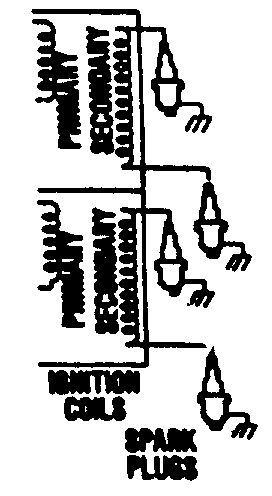D.I.S. SPARK PLUG FIRES WITH OTHER PLUG LEAD DISCONNECTED

VEHICLES AFFECTED: 1986 Models Equipped With Direct Ignition System
A Direct Ignition System is used on some models of 1986 cars. ln this system, the centre electrodee of two plugs are connected to the ends of a coil secondary winding. A four-cylinder engine has four plugs and two secondary windings.
Since two plugs are in series with a coil secondary winding, both plugs fire at the same time. The plug firing at the end of an exhaust stroke requires little voltage to fire, leaving ample voltage to fire the other plug at the end of a compression stroke.
It is possible for one plug to fire with the spark plug lead disconnected from the other plug. What is happening here is that the disconnected spark plug lead acts as one plate of a capacitor, with the engine being the other plate. These two 'capacitor plates' are charged as a current surge (spark) jumps across the gap of the connected spark plug. The plates are discharged as the secondary energy is dissipated in an oscillating current across tlie spark plug gap.
This operating principle of the capacitor serves to explain how one plug can fire with the other plug disconnected from the ignition system.

General Motors bulletins are intended for use by professional technicians, not a "do-it-yourselfer". They are written to inform those technicians of conditions that may occur on some vehicles, or to provide information that could assist in the proper service of a vehicle. Properly trained technicians have the equipment, tools, safety instructions and know-how to do a job properly and safely. If a condition is described, do not assume that the bulletin applies to your vehicle, or that your vehicle will have that condition. See a General Motors dealer servicing your brand of General Motors vehicle for information on whether your vehicle may benefit from the information.
